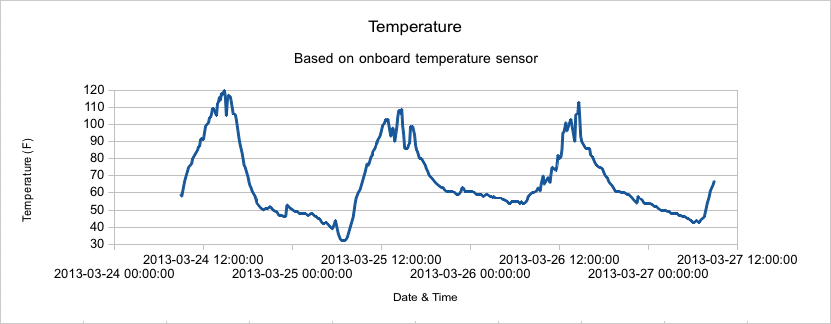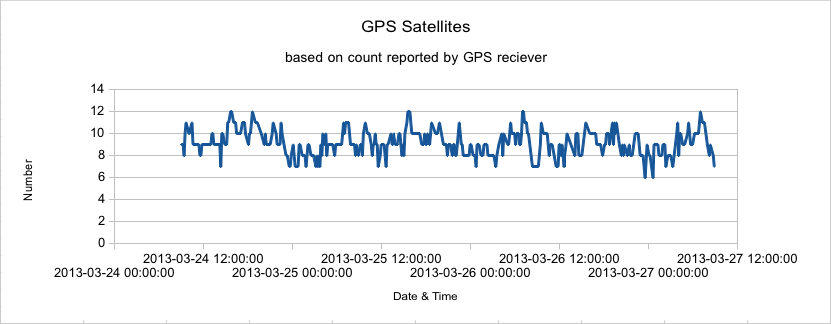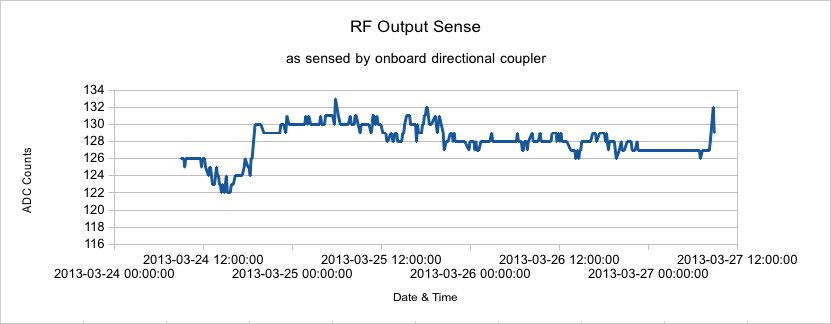As you know, I volunteer with a couple classes at the University of Washington, helping to create telemetry systems for balloons and rockets. The rocketry class in particular generally has two endeavors to launch their rockets. One in the fall over at Mansfield in eastern Washington, and the other at the Black Rock Desert in Nevada.
As mentioned in my last post, I was working on getting a beacon running to handle WSPR and APRS transmissions. I did get both of them working for use down there, but it seems due to a lack of much output power (40 mW) and a very poorly tuned antenna, there weren’t any WSPR spots. However, as the local club has spent a good bit of effort in providing amateur radio services to the area, there are a couple of nice digipeaters that pick up APRS transmissions quite readily, even at only 200mW transmit power.
The beacon I created was set up and running in a tent on the playa for most of the duration of the trip, and after grabbing the data from aprs.fi, I put the data into a spreadsheet program and made up a few nice charts of potentially interesting data.
The first is temperature. The beacon board has a temperature sensor mounted near the final amplifier for the APRS transmitter. This WILL affect the temperature readings somewhat, but the hope is that since readings are taken before turning on the amplifier, and that the transmissions were spaced five minutes apart, that the readings won’t be too terrible. Also as noted above, the board was located in a tent, so the temperatures inside a tent with the sun on it, or a person in it at night, will be much warmer than atmospheric temperature. However, you can still quite clearly see the day night cycle, and changes between the days.
The next point of potential curiosity is the number of GPS satellites the GPS receiver was tracking at a given point in time. Perhaps this would change with the day as the satellites fly over, or perhaps the receiver might be affected by temperature. However, while there were some changes, this seemed to be random acquisitions and losses of satellite signal rather than regular patterns.
Lastly, the APRS transmitter section has a small directional coupler built into the board to detect output power. This isn’t calibrated in any way and merely gives raw ADC values. The curiosity here would be if the transmitter chain would provide differing amounts of output power based on environmental temperature. However, while there were some changes, I don’t see a lot of specific change related to the temperature cycle.
I don’t have any photos available to share at the moment, but I’ll be meeting with the group soon to have a photo viewing party, and hopefully after that I’ll be able to share some.



